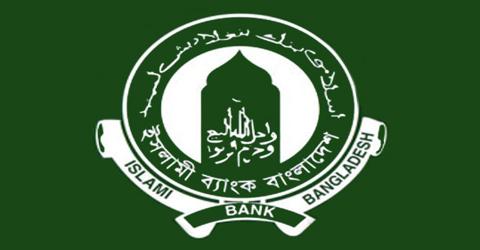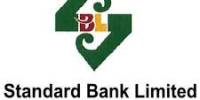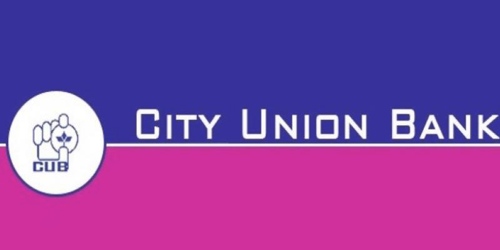General objective of this report is to analysis Rural Development Scheme of Islami Bank Bangladesh Limited. other objectives are evaluate the investment of the Sample Bank under Rural Development Scheme and to assess the recovery position of Rural Development Scheme of the Selected Bank. Finally identify the problems of Rural Development Scheme of the Sample Bank and suggest measure in order to overcome the identified problems.
Objectives of the Study
The main objective of education is to acquire knowledge. To acquired knowledge ultimately we must do some practical application in addition to theoretical knowledge. Through this report, we tried our level best to present our practical knowledge as well as –
- To make comparison of RDS of IBBL and conventional NGOs.
- To evaluate the investment of the Sample Bank under Rural Development Scheme (RDS);
- To assess the recovery position of Rural Development Scheme (RDS) of the Selected Bank;
- To identify the problems of Rural Development Scheme (RDS) of the Sample Bank &
- To suggest measure in order to overcome the identified problems.
Methodology of the Study
Data can be classified into two (02) categories:
- Primary Data &
- Secondary Data.
We collected data from two sources.
These two sources are:-
- Primary Source &
- Secondary Source.
The primary sources of our information are:-
- Direct observation &
- Questioning the concerned persons.
The secondary sources of our information are:-
- Annual report of IBBL
- Desk report of the related department
- Other manual information
- Different reference books of the library
Islami Bank Bangladesh Limited (IBBL):
In August 1974, Bangladesh signed the Charter of Islamic Development Bank and committed itself to reorganize its economic and financial system as per Islamic Shariah. In January 1981, Late President Ziaur Rahman while addressing the 3rd Islamic Summit Conference held at Macca and Taif suggested. “The Islamic countries should develop a separate banking system of their own in order to facilitate their trade and commerce”.
This statement of Late President Ziaur Rahman indicated favorable attitude of the Government of the People’s Republic of Bangladesh towards establishing Islamic banks and financial institutions in the country. Earlier in November 1982, Bangladesh Bank, the country’s Central Bank, sent a representative to study the working of several Islamic Banks abroad.
In November 1982, a delegation of IDB visited Bangladesh and showed keen interest to participate in establishing a joint venture Islamic Bank in the private sector. They found a lot of work had already been done and Islamic banking was in a ready form for immediate introduction. Two professional bodies Islamic Economics Research Bureau (IERB) and Bangladesh Islamic Banker’s Association (BIBA) mode significant contributed towards introduction of Islamic Bank in the country.
They came forward to provide training on Islami Banking to top bankers and economists to fill up the vacuum of leadership for the future Islamic banks in Bangladesh. They also help seminars, symposium and workshops on Islamic economics and banking throughout the country to mobilize public opinion in favor of Islamic banking.
Their professional activities were reinforced by a number of Muslim entrepreneurs working under the aegis to the then Muslim Businessmen society (now reorganized as industrialist & Businessmen Association). The body concentrated mainly in mobilizing equity capital for the emerging Islamic Bank.
At last, the long drawn struggle to establish an Islamic bank in Bangladesh becomes a reality. Islamic Bank Bangladesh Limited was established in March 1983. In which 19 Bangladeshi nationals, 4 Bangladeshi institutions, and 11 banks, financial institutions and government bodies of the Middle East and Europe Including IDB and two eminent personalities of the kingdom of Saudi Arabia Joined hands to make the dream a reality. The authorized capital of the Bank is TK. 50.00 crores and paid up capital is TK 32.00 Crores.
Inspired by the success of Islami Bank Bangladesh Limited 5 other Islamic Banks namely- ICB Islami Bank, Social Investment Bank Al-Arafa Islami Bank, Faisal Bank and Exim Bank have been established in Bangladesh. Prime Bank has established Islamic Branches.
Superiority of Islamic Bank Over Conventional Banking Systems
Through its steady progress and continuous success, IBBL has earned the reputation of being one of the leading private sector banks of the country. The distinguishing features of IBBL which are made it superior than any other conventional banks are mentioned below:
- All activities are conducted on interest-free system according to Islamic Shari’ah principles.
- Investment is made though different modes as per Islamic Shariah.
- Investment-income of the Bank is shared with the Mudaraba depositors according to an agreed upon ration, ensuring a reasonably fair rate of return on their deposits.
- Aims to introduce a welfare-oriented banking system and also establish equity and justice in the field of all economic operations.
- Extend socio-economic and financial services to individuals of all economic backgrounds with strong commitment in rural uplift.
- Plays a vital role in human resources development and employment-generation particularly among the unemployed youths.
- Portfolio of investment and investment policy have been specially tailored to achieve balanced growth & equitable development through diversified investment operations particularly in the priority sectors and in the less developed areas of the national economy.
- Islami Bank Bangladesh Limited is treated as leading Islami Banks of Bangladesh. Because this Bank is too much committed to Islami Shariah through an organization with highly motivated and qualified professionals toward Islami Shariah than any other Islami Banks of Bangladesh.
Islami Bank Bangladesh Limited (IBBL) was incorporated as the first Shariah based interest free bank in South East Asia at the 13th March 1983 as a public limited company under the Companies Act, 1913.
Vision
Our vision is to always strive to achieve superior financial performance, be considered a leading Islamic Bank by reputation and performance.
- Our goal is to establish and maintain the modern banking techniques, to ensure the soundness and development of the financial system based on Islamic principles and to become the strong and efficient organization with highly motivated professionals, working for the benefit of people, based upon accountability, transparency and integrity in order to ensure stability of financial systems.
- We will try to encourage savings in the form of direct investment.
- We will also try to encourage investment particularly in projects which are more likely to lead to higher employment.
Mission
To established Islamic Banking through the introduction of a welfare oriented banking system and also ensure equity and justice in the field of all economic activities, achieve balanced growth and equitable development through diversified investment operations particularly in the priority sectors and less development areas of the county. To encourage socio-economic uplift and financial services to the low-income community particularly in the rural areas.
Aims and Objectives
- To conduct interest-free banking.
- To establish participatory banking instead of banking on debtor-creditor relationship.
- To invest through different modes permitted under Islamic Shariah.
- To accept deposits on profit-loss sharing basis.
- To establish a welfare-oriented banking system.
- To extend co-operation to the poor, the helpless and the low-income group for their economic enlistment.
- To play a vital role in human development and employment generation.
- To contribute towards balanced growth and development of the country through investment operations particularly in the less developed areas.
- To contribute in achieving the ultimate goal of Islamic economic system.
Concept of Rural Development:
Rural activities have always provided the main source of live hood in developing countries like Bangladesh. Economic viability of the rural sectors exerts a strong influence on national growth rates.
During the 1950s and 1960s rural development rural development was an important but secondary element in national development strategies which tended to emphasize centrally planned investment in basic industries and physical infrastructure.
Although development was regarded as generally desirable went in regional planning framework, it was frequently assumed that the “trickle down” effects from the development of the industrial base would provide the main source of advancement for the rural community.
During the 1970s agricultural development got greater emphasis, partly in response to first oil crisis , which led mind countries to see good self food self sufficiency as an important goal. But the integrated rural area development and basic needs projects tended to retain a “centre –down” bias and did little to motivate and empower the beneficiary groups.
Rural development efforts in the 1970s ran into a number of problems. Insufficient attention was paid to wider agricultural pricing and policy issues. The level of sustainability of rural development project was also low as a result of their essentially enclave character and their marked dependence on expatriate expertise.
Further more the benefits of projects of this type-particularly where they were linked to heavy investments in irrigation and the introduction o the “Green Revolution” technology, were often siphoned off by landlords and the rural elite and did not reach the poor section of the rural society. In the 1980s a number of new stands were woven into development project designs.
First, much more emphasis was placed on getting agricultural policies and prices right.
Second, it had become evident that the poor “bankable”. Carefully targeted projects that provide appropriate technologies and credit within a sympathetic local institutional structure can have a major impact on rural poverty at the same time it has been recognized that an exclusive commitment to “bottom up” or grass roots development is rarely justifiable.
In most cases economic growth creates new opportunities for the poor and various existing channels can be exploited to help poor groups. These channels include policy reforms, bureaucratic intervention, and the activities of (NGOs).
Define NGO
Clearly, more is at stake in such evaluations than the continued flow of benefit streams and the maintenance of stock of physical, institutional and capital. It is necessary to look at macroeconomic, fiscal and environmental effects and to take some measure of a project’s impact on the survivability of target beneficiaries and their capacity for self-help.
If a project or program has negative impact on the empowerment and motivation of the poor, it matters little that is sustainable in the conventional sense.
Rural development for Poverty alleviation:
- Rural development programs provide a useful conceptual framework for grassroots, broad based socio-economic rural development, and that multi- sectored integrated approach is generally appropriate for rural poverty alleviation initiatives.
- Rural development project cannot be implemented from the “top down” or from outside” alone but need to be initiated and sustained by the participating population itself with assistance of government institution, private development organizations and eventually external donors.
- Rural development projects need to be oriented to target groups. The access of these groups to productive resources, services and markets needs to be improved. Target groups must be able to use their own initiate to obtain access to the production, information, and markets. To this end, the target group must be organized and mobilized and planning mechanisms must be oriented toward those groups and their participation.
- More needs to be done to clarify the factors that undermined the success of particular projects with a view to providing practical operational modes that’s can be used in the processes of participatory development , project design and implementation.
Role of Credit in Poverty Alleviation:
Many programs have instituted to improve the conditions of the poor, partly in recognition of the failure of inequitable growth to pull the poor up socio economic ladder or simply to compensate for their disadvantage position in the society.
The provision of credit to the poor has been a leading component of many of these programs because the lack of access to productive capital is thought to be one of the main factors preventing the poor from breaking away from the “poverty trap”. This trap, it is argued, makes it extremely difficult for the poor to overcome poverty without outside intervention.
In this simplest form this trap can be viewed in terms of the poor person’s low capacity to generate income, savings and investment in the economic environment that offers limited employment opportunities, which thus leaves the poor in perpetual poverty.
It is argued that providing the poor with credit can break this barrier to emancipation by giving them access to resources in particular, to –income producing or enhancing assets for small scale farmers and fishermen in rural areas. The small artisan petty traders and micro –entrepreneurs in urban area. With their thus allowing them to progressively increase their income, saving and investments through self employment and thus cross the poverty line over time.
Most government have allocated considerable amount of resources in the form of subsidized credit for the alleviation of poverty, especially in rural in areas. The rationale for subsidizing this credit is that the poor have limited capacity to repay because they have limited investment opportunities and providing them with credit services entails high transaction costs.
Subsidized credit often takes the form of government sponsored rural co-operatives, agricultural credit for the small farmer and special programs like the integrated rural development programs common in South Asia. The number of poor who have crossed the poverty line as a result of these programs is difficult to ascertain.
The impact of many of these programs is often positive and significant. Studies evaluating these programs confirm that their benefits have largely been accrued to rural elite who have been attracted by credit subsidies and used their influence over the administration of the credit delivery system to corner most of the credit resources at the cost of the rural poor.
Even the co-operative approach to credit, which had earlier been so successfully tried in Europe and North America in reaching the small farmers , and much later quickly and widely implemented in Asia largely through government initiatives , floundered badly with few exceptions.
Even the highly acclaimed Comilla co-operative model which attend considerable success during its early years when it was restricted to limited geographical coverage, on the whole failed to reach the intended beneficiaries the small farmers and suffered serious repayment and viability problems when the government replicated it nation –wide.
In the case of some other programs the failure is not so much in reaching the target group but the low repayment rates and the failure of the program to sustain the significant positive impact of credit through the provision of a follow –up credit to deserving borrowers. A good example is that of India’s Integrated Rural Development Program (IRDP) probably the most massive credit program of its kind targeted exclusively at the poor.
Government trying to provide poor farmers with access to credit often requires conventional banks to earmark a certain percentage of their outstanding loans at subsidized interest rates for the poor borrowers for whom the collateral requirement is waived. Loan guarantees are normally provided for by the government to reduce the high risk borne by the banks in lending to the poor.
Reasons for Failure of Earlier Credit Programs:
In the case of much credit co-operative that failed, a host of contributing factors acting together brought about their demise. Often cited causes are:
- Inadequate preparation of members
- Control and domination of the co-operative by powerful local elite, who often borrowed an inordinate proportion of loan funds.
- Weak management.
- Top down manner in which the co-operatives had been set up and run by the government and
- Over- dependence on outside funds rather than local saving mobilization Programs that have attempted to tap the resources of conventional banks to provide credit to poor borrowers through some form of arrangement with the government, often in the form of directives, have generally failed.
This is because they did not provide adequate incentives for the banks to make adequate profit from their loans to the poor. The primary objective of conventional banks is to make a profit on their loans.
But providing credit to the poor is staff-intensive and entails high transaction cost and risks that must be covered by interest earnings from lending and service fees. Understandably, most banks would not be willing precipitants in such programs and would accordingly try to avoid it or cut down their losses of opportunity costs by minimize their involvement.
Current Achievements And Constraints
Twenty years ago the only credit available to Bangladesh’s poor came from informal sources, friend traders and money lenders. The practice was extremely usurious. Today the situation has greatly changed with large number of people having access to credit from semi-formal institution. the early experiments of the Grameen Bank, BRAC and Proshika have translated into major credit operations.
In the 1980s saw the Grameen Bank and its model dominating financial flows to the poor. Although this remains the case in 1990s, there has been increased experimentation and innovation. The efforts are essentially in line with a banking system based on interest.
Success
By late 1995, the Grameen Bank and NGOs covered around 25% of the target group households with tk. 16,568 million (USD 404 Million) in loan outstanding. Coverage varies substantially from area to area between social groups. Areas with poor roads, low level of economic activity and weak NCB infrastructure have benefited little from micro-credit.
NGOs and Grameen Bank have performed much better than government credit schemes and their achievements, compare very favorably with all other anti poverty strategies in the country. Results have been so impressive that Bangladesh has now been a centre of micro-credit ideas, although it is still a recipient of ideas of savings. Currently, most of the saving generated by these institution tend to take the form of “required fees” for receiving credit, only to be has not been experimented with by these institutions although other counties have made successful advances in this area.
Constraint:
Some of factors constrain the performance and outreach of NGOs and the Grameen Bank. These are:
- The limited accessibility of the borrowers to mobilized savings
- An over-emphasis on credit (the micro mono –culture).
- The lack of investment opportunities for the poor people and , particularly those with no asset;
- The disadvantaged position of women, who bear the additional cost of securing access to markets and information;
- The inability of this institution to operate in disadvantaged areas.
- The absence of market demand for services provided by poor borrowers.
- Natural hazards.
Success Criteria for Rural Financing Schemes:
The success of the credit program designed to alleviate poverty would have to be evaluated in the light of the program objectives. A successful program may incorporate a broad set of objectives in addition to credit, such as empowerment, “Conscientisation” education and skills training.
The following five criteria are often used to assess the effectiveness of credit for poor programs:
- Extend to which the program has reached the truly poor. This can be measured both in terms of proportion of beneficiaries who are truly poor and the number of poor borrowers reached.
- Loan recovery. This is measured by the measured by the repayment rate. Sustained high loan recovery represents the simplest and clearest indicator of a program’s success as it reflects productivity or profitability of the loan, as well as the borrower’s satisfaction and support of the program.
- Productivity of the loan. This measures the viability of the investment into which the loan was applied by the borrower. It is normally measured in terms of returns on investment or capital –output ratio.
- Impact on borrower’s income .this impact refers to the extent to which the borrower’s real income has increased as result of the credit provided.
- It refers to the capacity of the program to become institutionalized into a financially self supporting program, able to cover all cost and to generate sufficient profits from its operation. Sustainability is affected by such variables as the interest rate charged, repayment rate and transaction costs.
Concept of Rural Development And Rural Financing Under
Islamic Banking Framework:
The concept of rural development is an integral part of the development concept. The concept of development as used in the jargon of modern economics literature does not satisfy the characteristics as enjoined by Islam. The Islamic concept of development has been derived from four key concepts such as Tawheed (unity),Rabubiyah (sustainer), Khalifah(representative) and Tazkiyah (purification).
According to Prof. Khurshid Ahmad: the Islamic concept of development is comprehensive and includes moral, spiritual and material dimensions. Development, in Islam is a good and value oriented activity devoted to the optimization of human wellbeing in all these dimensions.
The moral and material, the economic and social the spiritual and physical are inseparable. It is not merely welfare in this world that is the objective. The welfare that Islam seeks extends to the life hereafter and there is no conflict between the two. Islam commends the value of shukr (thankfulness to God availing of the His blessing) adl (justice) and condemns kufr(denial of Allah His of His blessing and julm(injustice).
The foregone discussion leads us to a conclusion that Islam stands for a development approach where free and unlimited operation of market ensure optimum utilization of resources and encourage a distribution pattern in which resources are circuited back from the well to do to the relatively weak. In order to do that a number of interventions are brought into effect.
For example fiscal policy and monetary policies including commercial flow of investible funds are to be designed in a way that resource are to be channeled to the relatively weak and disadvantaged section of population. Also, there should be a legal and institutional set up so that wealthy people transfer regularly the due share of the poor and the needy.
In addition to voluntary transfer to ‘what they have in excess of their need’ (afwa), the institution of Zakah and Ushr is the classical means of compulsory regular transfer of income / asset from the well to do to the poor.
Further the provision of qard al hasan (i.e. benevolent loan repayable without any return) is also and institutional obligation to make available funds to the needy. Thus the above principles and provisions construction the building blocks for the rural development schemes under the Islamic banking framework.
Background of RDS of IBBL
Bangladesh with its 40% people living below poverty line and 18% living in absolute poverty is suffering from acute rural-urban economic disparity coupled with illiteracy, lack of proper health and sanitation facilities. The country’s economy is basically an agrarian one with vast majority living in rural areas.
The agriculture sector is unable to provide any further scope for employment resulting in influx of rural population towards urban areas. Rural areas are characterized by stagnant agriculture and scanty industries. Underemployment and unemployment is a regular phenomenon particularly in rural areas.
The vast human resources have remained unutilized due to lack of education, proper training and concerted efforts to help grow the rural economy. These results in uneven distribution of income which causes serious set back in balanced geographical growth as well as growth of GDP.
Islami Bank Bangladesh Limited was founded with the major objective of establishing Islamic economy for balanced economic growth by ensuring reduction of rural-urban disparity and equitable distribution of income.
In view of the above, Branches of the Bank have been encouraged to invest their deposits in their respective areas and in particular for the economic enlistment of the rural people.
Accordingly, a Scheme in the name and style of ‘Rural Development Scheme’ has been introduced to cater to the investment needs of the agriculture and rural sector to create opportunity for generation of employment and raising income of the rural people with a view to alleviate poverty.
Objectives:
The main objectives of the Scheme are:
- To extend investment facilities to agricultural, other farming and off-farming activities in the rural areas;
- To finance self-employment and income generating activities of the rural people, particularly the rural unemployed youths and the rural poor
- To alleviate rural poverty through integrated rural development approach.
- To extend investment facilities for rural housing, keeping in view the needs of housing facilities of the rural dwellers.
- To provide educational services and safe drinking water, sanitation & Medicare facilities to the down trodden people.
Target Area:
Initially the Scheme was started as a Pilot Scheme in the rural areas of certain districts under the direct supervision of the nearby Branches of Islami Bank Bangladesh Limited. The Scheme is being gradually extended to all districts through different Branches of the Bank.
Centre Fund
Each member of the Group has to deposit minimum Tk.2.00 per week in the Centre Fund. This Fund is kept by opening a Mudaraba Savings Account in the name of the respective centre.
This Fund is utilized for the welfare of the members by way of Quard as per decision of the Centre in the weekly meeting. This account is operated by Centre Leader & Leader jointly. This fund is refundable.
Documentation
To secure Bank’s investment, the following documents have to be executed:
- Group guarantee form.
- Deed of Agreement.
- Usual charge documents.
Sanction And Disbursement
On the basis of the list submitted by the Field Officers, the Investment Committee of the Branch carefully scrutinizes the applications and sanctions the investment at the Branch level. The Investment Committee consists of Manager, Project Officer and the Field Officer.
After sanction of the investment the Branch complete documentation formalities and then disburse the amount with the help of the Investment Officer and Field Officer. In the entire cases branch must ensure strict adherence to the banking and Shariah norms.
Appointment of Field Officer
Field Officers are appointed by the Head Office of the Bank. After recruitment, the Field Officers have to undergo compulsory Foundation Training for a period of two weeks so that they can perform satisfactory.
They are appointed well ahead of starting operation of the Scheme in a Branch. The concerned Branch starts operation of the Scheme after satisfactory completion of the base- line survey, formation of the Groups, motivation of the Group members and compliance of the Group disciplines etc.
The Eligible Criteria for the Field Officers are the Followings:
- Young man with initiative and drive.
- Minimum qualification: graduate or equivalent.
- Willingness to work in the rural areas.
- They are recruited as per Recruitment Policy of the Bank under a separate ‘Service Rules for the RDS Employees’.
- Their services are confirmed after one year on satisfactory performance. The performance are considered satisfactory if rate of recovery is 95% or above.
Performance Of Rural Development Scheme Up To 31.12.2007
| Serial No. | Areas of performance | Number/Amount |
| 01 | Total number of Branch of IBBL | 186 |
| 02 | No. of Branch handling the Scheme | 118 |
| 03 | No. of Village | 10,023 |
| 04 | No. of District | 61 |
| 05 | No. of Centre | 18,897 |
| 06 | No. of Group | 103,345 |
| 07 | No. of Male member | 56,380 |
| 08 | No. of Female member | 459,885 |
| 09 | Total number of Members | 516,725 |
| 10 | No. of Client (Who availed investment) | 350,278 |
| 11 | Cumulative disbursement | 13,969.01 |
| 12 | Average size of investment | 0.011 |
| 13 | Present outstanding | 2,884.66 |
| 14 | No. of Field Officer | 1,819 |
| 15 | No. of Tube-well provided (Since inception) | 6,242 |
| 16 | Amount disbursed against Tube-well | 12.12 million |
| 17 | No. of Sanitary Latrine provided (Since inception) | 3,551 |
| 18 | Amount disbursed against Sanitary Latrine | 3.51 million |
Islami Bank Bangladesh limited (IBBL) envisages an economic system based on equity and justice. Taking into consideration that majority of the population below poverty line lives in rural Bangladesh, the Bank has devised a Rural Development Scheme (RDS) with a view to creating employment opportunity for them and alleviates their poverty through income generation activities.
The IBBL through its RDS project has been implementing integrated programs for the landless poor, eager laborers and marginal farmers aimed at meeting their basic needs and promoting their comprehensive development. Consciousness among the poor needs should be enhanced so that they can lift their position in the socio-economic structure of the country. In order to consolidate their economic base, invested money should be used in income generating activities so the poorer section of the population can become self-reliant. RDS works for the realization of that objective.
Agricultural Implements Investment Scheme:
Bangladesh is predominantly an agricultural country with vast majority of people living in rural areas. Most of our people for their living are dependent on agriculture. Agriculture still contributes the lion share of the gross domestic product. But we could not as yet become self-sufficient in food production. We still import a bulk quantity of food grains from abroad to meet the deficit. We must modernize our agriculture and establish more and more industries in order to minimize imports.
The Bank has introduced “Agriculture Implements Investment Scheme” to provide power tillers, power pumps, shallow tube-wells, thrasher machine etc. On easy terms unemployed youths for self-employment and to the farmers help augment production in agricultural sector.
Micro Industries Investment Scheme
Islami Bank Bangladesh Ltd. has been appreciably participating in this direction by financing industrial sector. With a view to creating wider base for industries, the Bank has decided to launch “Micro Industries Investment Scheme” through its Branches.
Efficacy of Customer Services of IBBL
The most important asset of any organization is its customers. An organization’s success depends on how many customers it has, how much they buy, and how often they buy. Customers that are satisfied will increase in number, buy more, and buy more frequently. Satisfied customers also pay their bills promptly, which greatly improves cash flow-the lifeblood of any organization.
The organizational diagram in Figure best exemplifies just how important the customer is to any organization.
A company is a device for transforming inputs into outputs. The simplest measure of efficiency is the quantity of inputs that it takes to produce a given output; that is, Efficiency = outputs/inputs.
A company can increase efficiency through a number of steps. These include exploiting economies of scale and learning effects, adopting flexible manufacturing technologies, reducing customer defection rates, getting R&D function to design products that are easy to manufacture, upgrading the skills of employees through training, introducing self-managing teams, linking pay to performance building a company wide commitment to efficiency through strong leadership, and designing structures that facilitate cooperation among different functions in pursuit of efficiency goals.
To achieve superior customer responsiveness often requires that the company achieve superior efficiency, quality, and innovation. To achieve superior customer responsiveness, a company needs to give customers what they want when they want it.
It must ensure a strong customer focus, which can be attained through leadership; training employees to think like customers; bringing customers into the company through superior market research; customizing the product to the unique needs of individual customers or customer groups; and responding quickly to customers’ demands.
Customer’s satisfaction depends on Efficacy of customer service. If customers of the bank are satisfy on the banking service then the efficacy will be positive. On the other hand, if customers are dissatisfy then the efficacy will be negative.
Efficacy of customer service is related with progression of operation. We can identify the efficacy of customer service by studying the progress of IBBL from starting to at present. The progress of IBBL is very rapid with the concern of its profit making and growth of its operation within the country towards the country’s economy.
Problem in RDS of the Selected Bank
- Bad effect of the conventional NGOs;
- The amount which is providing for small & micro investment facilities to the agricultural & rural sector is not enough.
- Their investment sanction procedure is much more lengthy than conventional NGOs;
- Gestation period is not enough to repay the investment amount with profit by the client;
- All class of people are not familiar with Shari’ah based investment;
- At present only 118 branches of the bank are involved in this scheme which is not sufficient to acquire their objective of RDS.
- Only 1,819 field officers in 18,897 centers among 10,023 villages are working which is poor number to operate their RDS smoothly.
Recommendation
It is not unexpected to have many problems in any organization. For this reason already we have found many problems of IBBL. To solve these problems, we can suggest following recommendations:
- IBBL’s investment sanction procedure should be made shorter and easier.
- They should increase their investment amount.
- They should increase their gestation period.
- To achieve their objective, they should increase their branches which will involve in this scheme.
- IBBL should appoint a sufficient number of women employees to deal women entrepreneurs and professionals and understand their needs and thus create demand for investment.
- They should take aggressive advertising policy to inform the people about Shari’ah based investment.
- To gain success in the programs like “Poverty Alleviation and “Self Reliant” especially in rural areas, this bank should provide investment facilities on the basis of individual position.
- They should increase skilled manpower so that they can perform their activities effectively and efficiently.
- IBBL needs to finance the needy entrepreneurs who have no money at all and they are newcomer in the business.
- Arrangement of monthly /quarterly training courses /workshops for the clients selected by the Branches in order to promote Investment clients of the desired level.
- The authority of IBBL should manage pressure on Government bodies to run proper and sufficient application of Islamic banking law in Bangladesh.
Conclusion
The concept of Islami banking is several decades old. The first attempt to establish an Islamic financial institution took place in Pakistan in the late 1950¢s with the establishment of a local islami bank in a rural area (Wilson 1983). After 42 years, Islamic banking system is established in Bangladesh as a financial institution that is named “Islami Bank Bangladesh Limited “.
Islamic Bank Bangladesh Limited is a bank which operates it¢s activities according to quaran and Sunnah. It¢s banking activities based on profit \ loss sharing. It does not create any illegal pressure on client.
The strength of Islami Bank Bangladesh Limited are – employees of this bank are honest because they strongly believes in Islamic rules and Allah and they do not take any types of bribe form clients .so believes of people are increasing on the activities of Islamic bank Bangladesh limited.
The opportunity of Islamic bank Bangladesh limited is – science majority people are Islamic minded and Islamic bank Bangladesh limited is based on Islam. So many people of Bangladesh are involving with IBBL for doing their daily financial activities. So it has a bright future because it has got huge customer then other conventional bank in Bangladesh that are based on interest.
The weaknesses of Islamic bank Bangladesh limited are – although it is getting bright future but it does not operate it¢s activities 100% based on Islamic shariah. Because still there is not existed an Islamic environment in the economic activities of Bangladesh. It is performing it¢s daily financial transecting with other financial institution that are not based on Islam. In this case, it is involving with some non-islamic activities unintentionally. On the other hand every client is not 100% honest. So they are taking investment form ibbl and after maturity, they are showing loss on that project intentionally. So IBBL is losing some profit form their investment .For this reason, Islamic bank Bangladesh limited has closed it¢s Bai – mechanism. Now it is not providing investment under this mechanism.
Threats of Islamic bank Bangladesh limited are – at this time, many financial institutions have commenced their financial activities according to Islamic shariah. This type of organization will create more competition in the financial market. So it is a threat for Islamic bank Bangladesh limited.
After all, although it is facing some problem, it has a bright future and day-by-day it is enhancing it¢s financial activities over the country. Many organizations are following to IBBL and they are starting their business based on Islamic shariah in the economy in Bangladesh.
















